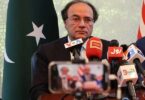There has always been a loud talk about the bad consequences of rapidly growing population over the past 48 years by the ruling elected and non-elected leadership of the country, demographers and development economists but not a single comprehensive plan was drawn up and implemented to tackle this burning issue. It could have been tackled by increasing investment in education and seriously addressing the issue of growing unemployment. It is noteworthy that serious efforts for population control were initiated in the government of President Ayub Khan by creating Family Planning Organisation and boosting the economic growth to create job opportunities.
It is not less than a national tragedy that the executive branch of the state has abdicated itself from the responsibility of policy making to resolve the problem of overpopulation. Hence the judiciary has to take the initiative. On December, 5 2018 the Chief Justice of Pakistan Mian Saqib Nisar hosted a population growth conference in Islamabad. Prime Minister Imran Khan was invited as Chief Guest to this important event. Earlier in July last year, the apex court bench headed by the Chief Justice took suo motu action on the fast increase in population. The Chief Justice on the occasion had remarked that there was a dire need to formulate a uniform and effective policy to curb population growth.
During the hearing of the case on country’s increasing population on Thursday, the Chief Justice Mian Saqib Nisar said that Pakistan’s resources are shrinking and land for agriculture is diminishing. He said that burgeoning population and its control are a bigger issue for the country than the water scarcity faced by it. The attorney general informed the bench that digital media run awareness campaign is underway on which the Chief Justice commented that the authorities still do not have a comprehensive plan on the matter and added that the supreme court will outline steps the government needs to tackle the issue.
Overpopulation is the cost of illiteracy which was perpetuated by axing the financial resources for investment in education for both the genders. Federal Minister for education and professional training Shafqat Mahmood had told the Senate in his written reply last month that the national literacy rate had dropped from 60 to 58 percent in the span of two years. The actual literacy rate may be lower than what the minister revealed in the upper house of the parliament. UNESCO Global Education Monitoring Report meanwhile recorded female adult illiteracy rate at 63 percent in 2017. The education minister attributed the decrease in overall literacy rate to higher population growth which in his view vastly outpaces the limited resources of public education system. The gains in students’ enrolment in both boys and girls schools in Khyber Pukhtunkhwa and the proposed launching of second shift in government schools negates the assessment of the federal minister. However, 25 million children are out schools. Experts have estimated that, left unchecked, Pakistan’s population could grow by as much another 30 percent by 2030.
It is pertinent to mention that Muslim countries such as Iran and Bangladesh have successfully brought their population growth under control and achieved higher literacy rate than Pakistan despite serious economic challenges. It demonstrates that these issues have much more to do with policy makers’ continuous abdication of responsibility in terms of human resource development. Winding up of National Commission for Human development (NCHD) by Asif Zardari government of PPP is a glaring example of the recent past. As per the UNDP report of 2016, the Human Development Index (HDI) of Pakistan is 0.05 percent.
The divergent human development path that has been taken by Pakistan and Bangladesh since 1971has resulted in the latter now having considerably improved social indicators, despite once commonly associated with poverty and over population. Bangladesh succeeded in achieving lower population growth with consistent government interventions such as introducing larger scale health workers programme, public awareness campaigns on family planning across mass media platforms. On the other hand Pakistan’s Lady Health Workers programme faltered under the pressure of heavy work load, limited resource allocations and poor salaries. Meanwhile efforts to promote family planning with mass communication tools particularly electronic media obstructed under the guise of public decency. In Bangladesh gender parity was achieved in elementary and secondary education by 2015 which contributed to the success of population planning measures.
Women empowerment in general and girls’ education in particular is a key to resolving the socio-economic strain caused by overpopulation. While boosting the overall literacy rate, the existing gender disparity in human resource development needs to be bridged, achieving the goal of universal education for both boys and girls.






